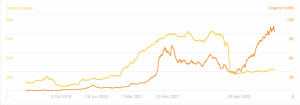With mobile devices, people are searching in real time for negative experiences to make decisions. CMOs, are you prepared? Contributor Brian Solis discusses the benefits of building consumer trust.

The best experiences and the worst experiences are oftentimes so compelling that we can’t help but share them. That’s nothing new. We’ve all heard the saying that a happy customer tells one person while an unhappy customer tells anyone who will listen. It’s partly cathartic. It’s also a way of helping save others from similar experiences.
In a social, mobile, real-time world, shared experiences only become more potent. The question is, when someone picks up their mobile device in a micro-moment to search, on which side of those experiences does your brand reside? And how are your marketing efforts promoting positive experiences for customers to discover?
Mobile devices have created a new generation of super-empowered consumers. They’re connected, informed and sophisticated. These consumers are also more impatient, demanding and curious. They’re increasingly improving how to seek what’s best for them and also what to avoid. They have access to platforms where shared experiences can reach hundreds or even thousands of people, for better or for worse.
Google, for example, found that mobile searches that include “best” have grown over 80 percent in the last two years. At the same time, searches ending with “to avoid” have grown 1.5x in the same span, and searches for “worst” are also on the rise.
“Is ____ worth it,” another key mobile search phrase becoming increasingly popular, also grew over 80 percent. And Google isn’t the only place people search. YouTube has long been touted as a secondary search engine. For instance, users’ watch time of “does it work” videos grew by more than 11x in the past two years, according to Google.
Consumers are also seeking visual proof that the items they’re considering will meet their needs and that they will deliver desired value. And these searches span the spectrum of high- and low-consideration purchases in nearly every industry.
This all represents a trend long in the making. Among everyday consumers, trust in brands and executives erodes every year.
Trust is increasingly democratized and less hierarchical, according to Edelman’s annual Trust Barometer report. Edelman found, for the first time, that 60 percent of consumers view “a person like yourself” as a credible a source for information about a company as a technical or academic expert. And the credibility of CEOs hit an all-time low, with a 12-point decline in the last year.
Building trust builds stronger brands
Building consumer trust becomes not only an imperative for attentive brands but also a significant competitive advantage.
Empowered consumers want what’s best for them, regardless of the size of purchase. It’s actually quite reasonable when you think about it. The new reality is that mobile devices give people instant access to information and insights from their peers that weren’t as readily available before.
As one consumer shared with Google’s research team, “There’s no limit to the information available, you just have to know what to take into consideration before you lay out your money for something.”
Marketers are already “listening” to social media and reviewing sites to track sentiment and share of voice. But not many are following the discovery process of their customers in Google or YouTube search. These are among the first places super-empowered consumers go to seek out what’s best and what to avoid.
If consumers are becoming super-empowered, then brands and marketers must also become super-informed. This starts with walking in the mobile footsteps of their customers to surface what they search for and what they do and don’t find.
Doing so identifies critical issues and opportunities to improve. It also humanizes the discovery process to inform marketers how to better communicate with customers in real time.
Remember, the best experiences and the worst experiences oftentimes become memories. And once they’re shared, they become the guideposts for consumers seeking real-time direction. Informed brands can now serve as adviser brands by understanding concerns and proactively addressing them to genuinely guide consumers on their journeys.
Opinions expressed in this article are those of the guest author and not necessarily Marketing Land. Staff authors are listed here.
Marketing Land – Internet Marketing News, Strategies & Tips
(52)
Report Post










